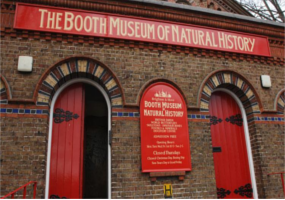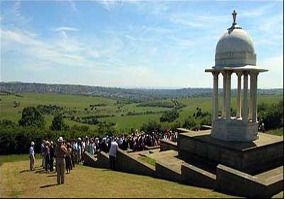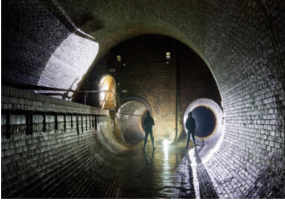Find all the best Museums and Heritage sites now with us….
 |
|||
The Royal Pavilion, also known as the Brighton Pavilion, is a Grade I listed former royal residence located in Brighton, England. Beginning in 1787, it was built in three stages as a seaside retreat for George, Prince of Wales, who became the Prince Regent in 1811. It is built in the Indo-Saracenic style prevalent in India for most of the 19th century. The current appearance of the Pavilion, with its domes and minarets, is the work of architect John Nash, who extended the building starting in 1815.
Heritage in Brighton
Since the flamboyant Prince Regent (later King George IV) first stepped out in Brighton in 1783, his extraordinary seaside palace, the Royal Pavilion, with its Indian domes and minarets and Chinese style interior, has become synonymous with the city of Brighton and Hove.
Brighton Regency history and architecture
In fact, some of the finest examples of Regency architecture in England can be seen in the city. From the stunning squares and crescents in Hove to the elegance of Regency town houses, Brighton’s Regency heritage blends seamlessly with the more modern aspects of the city.
For traditional seaside heritage Brighton’s famous beachfront is home to a Victorian Brighton Pier, old Fishing Museum and majestic remains of the West Pier, whilst slightly further afield the impressive Preston Manor conjures up a heady atmosphere of an Edwardian gentry home.
The Chattri Memorial
During the First World War injured Indian soldiers were hospitalised in the Dome in Brighton. The Hindus and Sikhs who died were cremated on the downs and, in 1921, the Chattri memorial was constructed on the cremation site. One of Brighton's most unique monuments, you can find out how to get there on the Brighton and Hove council website.
Brighton Fishing Museum
The fascinating history of the fishing industry and beach leisure trade of Brighton is presented at Brighton's Fishing Museum. Working fishermen in adjacent arches bring history to life, whilst exhibitions of boats and fishing artefacts alongside contemporary film and slide shows offer an intriguing insight into the fishing heritage of the city.
Sculptural heritage
Brighton is also home to an array of impressive sculptural works. From the ‘doughnut’ and Kiss Wall on Brighton seafront to the ‘singing’ sculptures in Churchill Square, why not download the National Recording Project for Sussex Brighton Sculpture Trail and learn more about Brighton’s rich and diverse sculptural heritage?
Brighton Sewer Tours
Don't worry, they aren't used anymore. Brighton's Victorian sewerage system is actually one of the most magnificent examples of Victorian civil engineering in the country.
Tours of the award-winning sewers, which run from May until September, have become established as a highly popular attraction for tourists and local residents alike.
St Andrew's Church
Set back from the seafront, this Regency church was built to serve the expanding resorts of Hove and Brighton. Designed in 1827 by the famous architect Sir Charles Barry, its Italian Renaissance style perfectly matches the symmetry and grandeur of the neighbouring squares and terraces.
Extended in the 1880s, the church was further beautified in 1925 when Randoll Blacking added superb baldacchinos for altar and font to fulfil the parish priest's desire that St Andrew's should become 'a little bit of Italy in Waterloo Street'

















